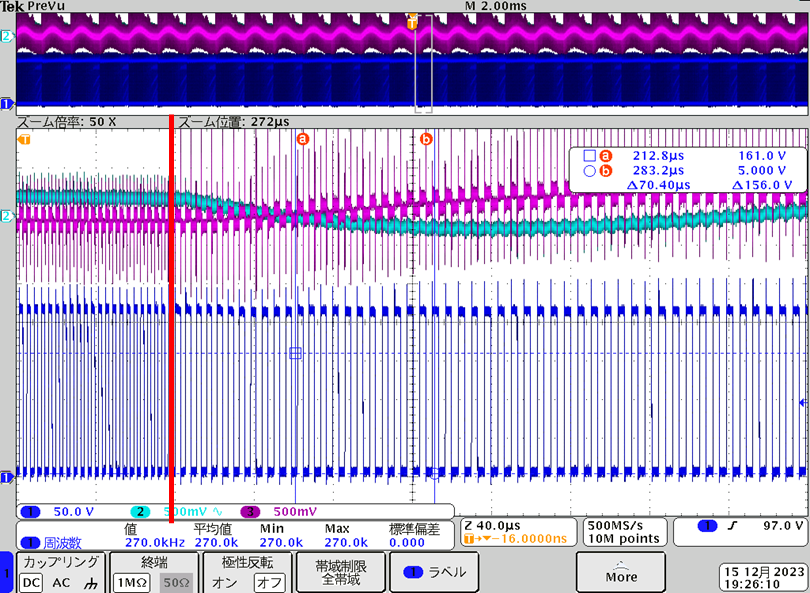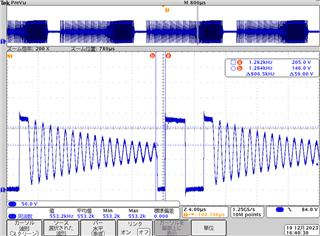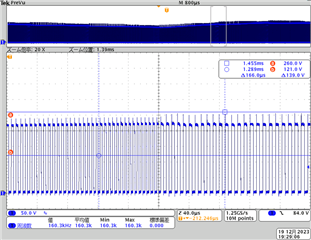Check the waveform below.

CH1 (blue) is the Vds of the low side FET.
The ON time of the high side FET becomes longer in an instant from the red line part.
The ON time of the high side FET continues to be long, the output voltage (CH2: light blue) decreases, and the voltage between the collector and emitter of the photocoupler (CH3: purple) increases.
I changed the resistance values of RTZ and RDM by ±10%, but there was no change in operation.
Can you think of any reason why the ON time of the high side FET becomes longer in an instant?
I've made over 500 units so far, and only one has had this problem.






